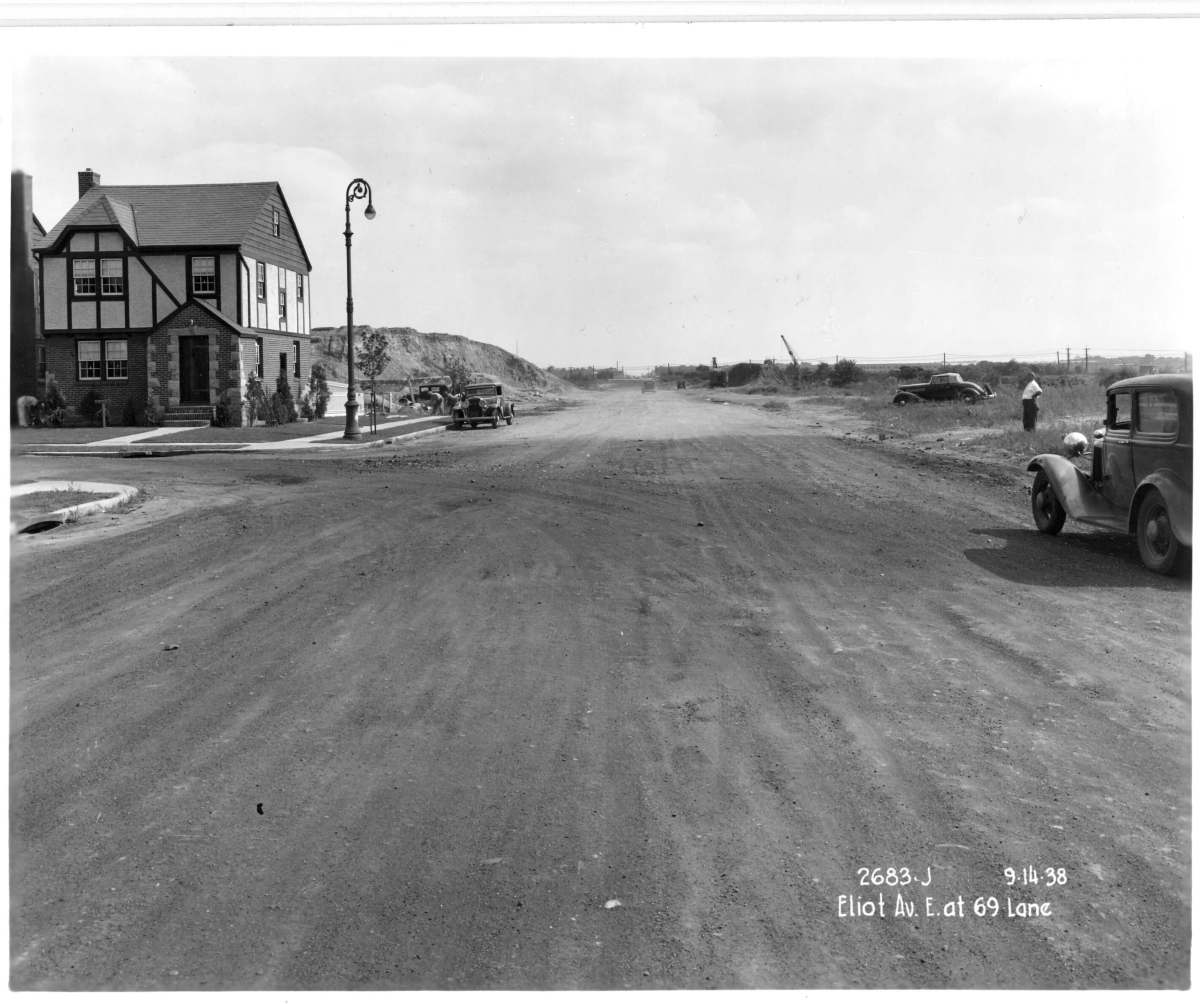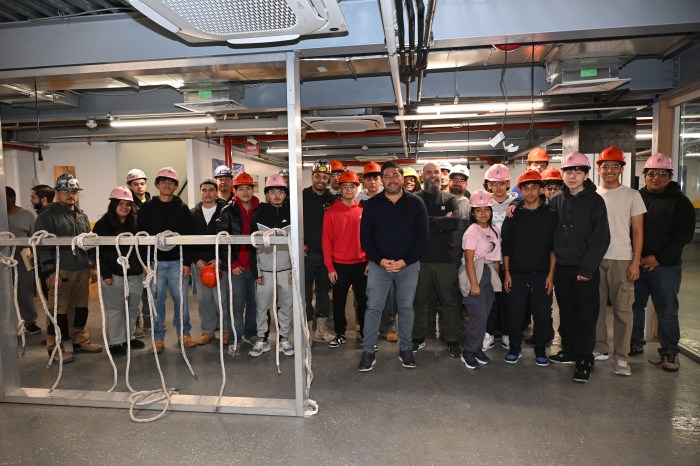Eliot Avenue isn’t as old as some of Queens’ most historic roadways, but for a time in the 20th century, it was one of the borough’s most important thoroughfares.
The oldest segment of the two-mile roadway stretches about a half-mile from Metropolitan Avenue to Mount Olivet Crescent. The remainder of the roadway, from Mount Olivet Crescent to Queens Boulevard, wouldn’t open until 1938, just a few months before the opening of the 1939-40 World’s Fair in what’s now known as Flushing Meadows Corona Park.
Indeed, after the fair opened, Eliot Avenue would become the main thoroughfare for residents from Ridgewood and points west in Brooklyn to travel to and from the fairgrounds. This was a period long before expressways criss-crossed the city.
Eliot Avenue was named for Walter G. Eliot, who served in the Queens Topographical Bureau as an engineer and, later, its leader. The roadway was laid over part of what had been the Juniper Swamp, a vast wetland covering much of present-day Maspeth and Middle Village. Juniper Valley Park, located only a couple of blocks from Eliot Avenue in Middle Village, was part of the very same swamp.
For many years in the early 20th century, the city had plans to widen and lengthen Eliot Avenue, but were stymied due to a variety of factors. The Great Depression, of course, greatly pained the city’s finances, so public works like road-making were delayed or scrapped.
Mount Olivet and Lutheran (present-day All Faiths) cemeteries also balked at giving up land to the city for the construction of Eliot Avenue. After much negotiation, however, the city was permitted to construct a thin, two-lane strip between the cemeteries.
The widened, lengthened Eliot Avenue was officially dedicated on Feb. 4, 1939, with a ceremony held at the western end of the roadway, at Metropolitan Avenue on the Ridgewood/Maspeth border. The Ridgewood Times documented the Eliot Avenue opening — a feat that “fulfills 25 year dream,” as the headline noted — with a front-page story in its Feb. 10, 1939, issue.
“With a crowd of about 500 men and women on hand notwithstanding the cold, Eliot Avenue, recently widened and paved from Metropolitan Avenue to Queens Boulevard, was officially opened to traffic on Saturday afternoon with appropriate ceremonies at Eliot and Metropolitan avenues.
“The ceremonies, conducted under the auspices of the Ridgewood-Metropolitan Civic Association, were presided over by Andrew J. Reiff, president of the association. …
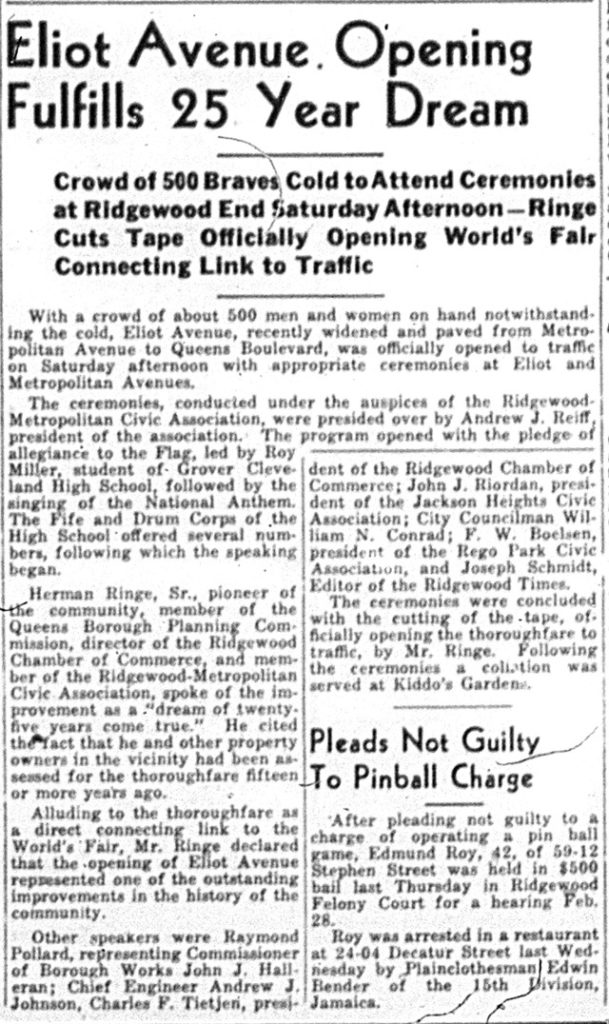
“Herman Ringe Sr., pioneer of the community, member of the Queens Borough Planning Commission, director of the Ridgewood Chamber of Commerce and member of the Ridgewood-Metropolitan Civic Association, spoke of the improvement as a ‘dream of 25 years come true.’ He cited the fact that he and other property owners in the vicinity had been assessed for the thoroughfares 15 or more years ago.
“Alluding to the thoroughfare as a direct connecting link to the World’s Fair, Mr. Ringe declared that the opening of Eliot Avenue represented one of the outstanding improvements in the history of the community.”
The road’s opening, of course, did more than just bring visitors to the World’s Fair. It also fueled the transformation of Maspeth and Middle Village from farmland to a residential community featuring predominantly one-family rowhouses along with little hubs of commerce with mom-and-pop stores.
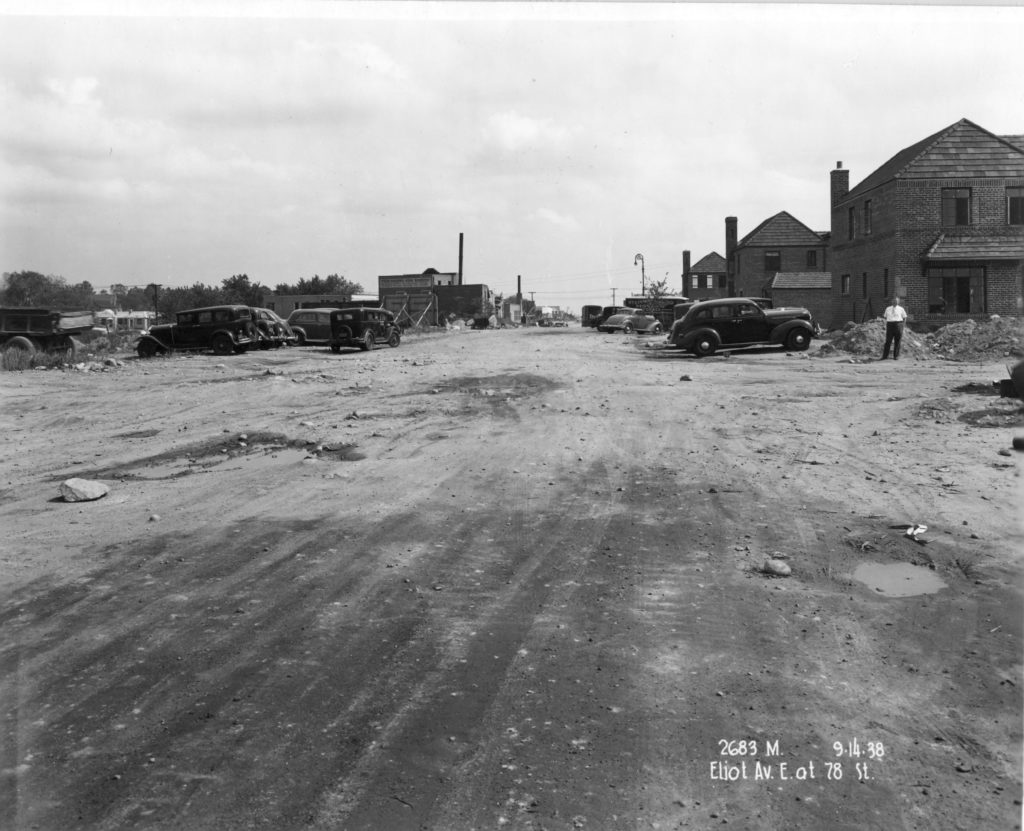
The Eliot Avenue Civic Association was founded in 1938 to represent homeowners in the new residences being developed in the area of Eliot Avenue. This organization would later merge with another civic group, the Residents of Juniper Park Homes, to form the Juniper Park Civic Association — which, to this day, remains one of the most active civic groups in Queens.
Most of Eliot Avenue serves as the border between Maspeth and Middle Village, stretching from Metropolitan Avenue to 74th Street. It had also been the border between Middle Village and the area known as “South Elmhurst” (south of the Long Island Expressway between 74th and 86th streets) until that section was added to Middle Village’s 11379 ZIP code in 2003.
Eliot Avenue between Metropolitan Avenue and Woodhaven Boulevard remains four travel lanes wide (two lanes in each direction) except for the two-lane segment sandwiched between All Faiths and Mount Olivet Cemeteries (between Mount Olivet Crescent and 67th Street). The two-lane portion was reconstructed by the city between 2007 and 2008 to include a new roadbed, a wider sidewalk on the eastbound side (adjacent to All Faiths Cemetery) and antique replica lighting.
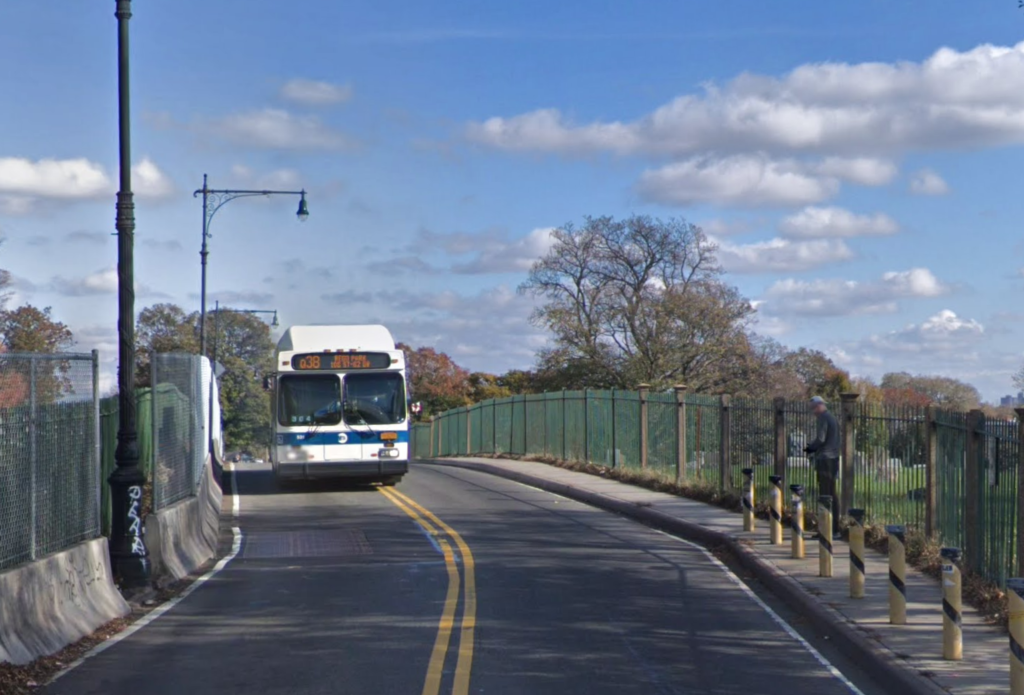
Though the roadway is predominantly residential, Eliot Avenue is home to two important religious institutions in the community: Our Lady of Hope Church and Catholic Academy and Resurrection Ascension Church and Catholic Academy. There are also two small retail segments in Maspeth and Middle Village between 71st and 74th streets, and between 79th and 82nd streets.
The construction of the Long Island Expressway in the 1950s and 1960s, for better or worse, transformed that highway into the area’s most important roadway. But for Maspeth and Middle Village residents, Eliot Avenue remains one of the central arteries for the place they call home.
One more thing: If the name Andrew Reiff, as mentioned in the Ridgewood Times excerpt above, sounds familiar, it should. He’s the namesake of Reiff Playground, located in Maspeth on 59th Drive between Fresh Pond Road and 63rd Street.
Reiff, who died in 1963, served as Ridgewood-Metropolitan Civic Association president for more than 30 years. As noted in a NYC Parks Department biography, Reiff “played a leading role in disputes over land development in his neighborhood of Maspeth.” The playground itself “owes its existence to his dedicated efforts.”
Like many other civic groups in the area, the Ridgewood-Metropolitan Civic Association was founded in 1909 by residents who sought to band together and receive proper and necessary services from the city. The group played a role in the founding of Grover Cleveland High School in Ridgewood and M.S. 153 in Maspeth.
Sources: The Feb. 10, 1939, Ridgewood Times, the NYC Parks Department, “Our Community: Its History and People” by the Greater Ridgewood Historical Society (1976) and the Juniper Park Civic Association.
***
If you have any memories and photos that you’d like to share about “Our Neighborhood:The Way it Was,” write to The Old Timer, c/o Ridgewood Times, 38-15 Bell Blvd., Bayside, NY 11361, or send an email to editorial@ridgewoodtimes.com. All mailed pictures will be carefully returned upon request.

